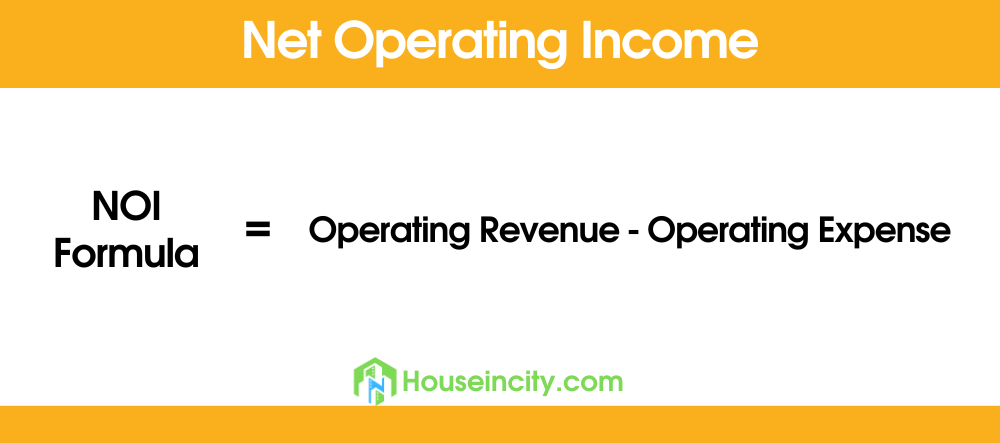Understanding Net Operating Income (NOI) in real estate is not only important, but it is also vital for anyone hoping to get a leg up on their competition. But what is NOI in real estate, and why is it important?
Simply put, NOI is a formula (a property’s revenue minus its operating expenses) that real estate investors use to gauge the profitability of a potential commercial property.
Continue reading to learn more about NOI, including why it is important and how to calculate NOI for commercial property.
What Is Net Operating Income (NOI) In Real Estate?
Net Operating Income (NOI) is a formula that commercial investors use to figure out if a property is worth looking at more closely. The basic formula for calculating NOI is:
A property’s operating revenue – A property’s operating expenses = NOI
Operating cost refers to any cost associated with the management and maintenance of the property (utilities, marketing, repairs) while operating revenue refers to the money generated through normal business operations.
Why Is Net Operating Income (NOI) Important?
Commercial real estate is a competitive market. A good commercial real estate investor must be able to respond quickly to a potential property or they will lose it to another investor.
Net Operating Income (NOI) is just one tool that investors can use to gauge a property’s potential quickly. By calculating the NOI, investors can decide whether a property is worth looking at more closely or not worth their time at all. Additionally, lenders may use the NOI to decide whether to extend a loan to the investor.
How To Calculate Net Operating Income (NOI)
Although the NOI formula sounds simple enough, understanding what to include in both figures can get a bit tricky.
For starters, NOI is calculated yearly, so investors will need to know both their annual expenses and income. To do this, they will need to know what to include in both figures. Once both figures are determined, investors can simply follow the formula shown above.
For example, a local investor is thinking about investing in a laundromat, but he is unsure whether it would be a wise investment.
First, he would calculate the company’s operating revenue.
- Projected Income – $90,000
- Vending Machines – $3,000
- Parking for Local Summer Concerts – $2,000
Then he would calculate the company’s operating costs.
- Property Taxes – $4,500
- Utilities – $8,000
- Maintenance and Repairs – $40,000
- Marketing – $2,000
Finally, he would subtract the total expenses ($54,500) from the total revenue ($95,000) to find the NOI was $35,500.
What Is Included in Net Operating Income (NOI)?
Exactly what investors need to include may vary depending on what type of commercial property it is, but they should include any income generated through normal business operations.
- Rental Income: This should not be calculated at 100% occupancy. Instead, investors will need to calculate a typical occupancy rate. Ask the previous owner for an occupancy history or compare it to similar rental units in the area.
- Property Taxes: This will depend on the location of the property and can often be found through historical records or by going through the proper municipal channels.
- Utilities: This includes any utilities paid for by investors, including water, electricity, trash removal, etc.
- Maintenance: Maintenance fees can include things such as cleaning, landscaping, regular or semi-regular maintenance, etc.
- Management: If investors use a management company, they will include this fee.
- Marketing: Any money spent regularly on marketing a business should be included.
- Repairs: Both general repairs and renovation costs will be included. For example, if an investor is thinking about fixing a house and flipping it, they will need to calculate what it will cost them to make the necessary repair or upgrades.
- Additional Income: Any forms of passive income (vending machines, etc.).
This is not an extensive list. However, it works to provide an idea of what is included in the operating revenue figure when calculating a property’s NOI.
What Is Not Included in Net Operating Income (NOI)?
When calculating the NOI of commercial real estate, there are a few things that should not be included in the operating revenue. These include things such as:
- Utilities: Any utilities that are not paid for directly by investors (paid for by a tenant).
- Taxes: Income taxes are not included.
- Non-Typical Business Revenue: For example, if an investor bought a new company car and sold the old one, the profit from that sale would not be included in the NOI calculation because that is not a typical business income.
- Interest: Any interest that accrues on a loan or mortgage cannot be included.
- Debt Services: This includes any loan or mortgage payments or other bills (such as student loans).
- Tenant Improvements: Any improvement that is specific to a tenant rather than the property is not included. For example, cubicles for office space or special lighting.

